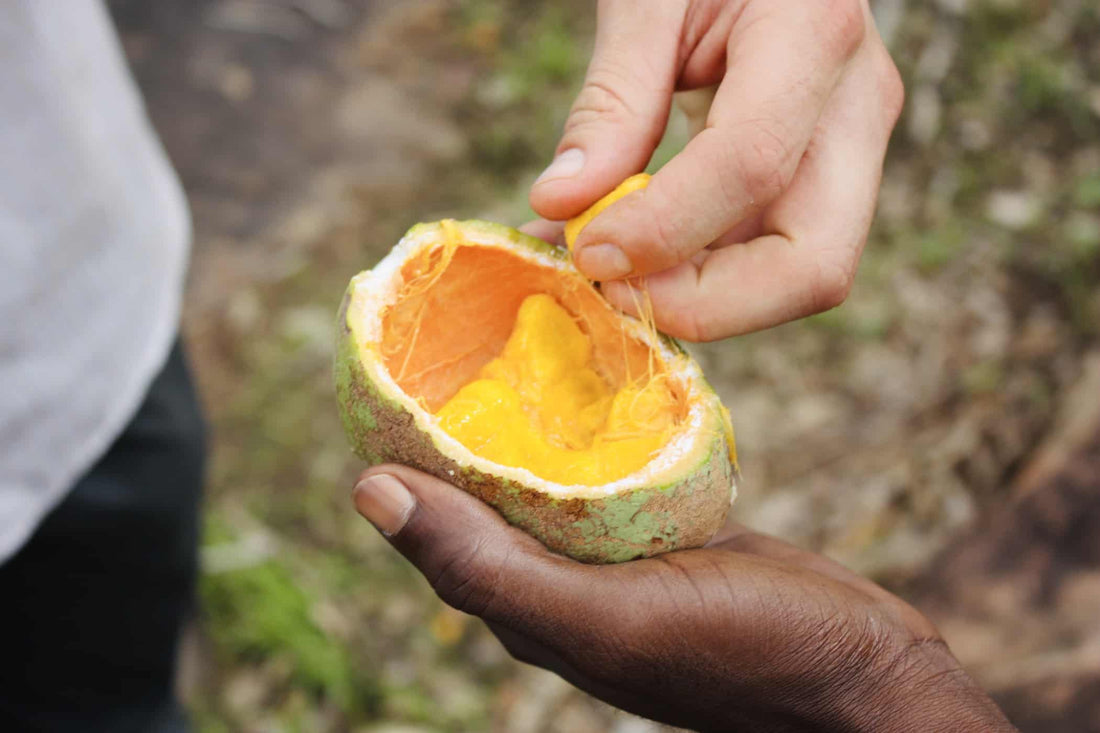This fruit originating from West Africa, in particular from the Casamance region in Senegal, has something magical about it. The Madd tree (in Wolof) is part of the "Sacred Woods". In the communities of Diola this species is used as a wall or a curtain to hide what is happening in the sacred groves. They make us think a little about ENTs.
MADD family

The Saba are very important in the family economy of the communities of Casamance, in particular for the Djola, farmers by tradition. For this reason it is easy to find in local markets, where it is sold coated in sugar.
His collection is super organized; the starting date of the collection is fixed and is reserved only for local populations. It is mainly women and children who resell the harvest in the various weekly markets to street traders, known as "Banas Banas". The main destinations are the most important markets of Senegal: Kolda, Diaobe, Bignona, Touba, Dinguiraye and Dakar.
Sweet or a little salty?
The fruit is eaten raw or cooked in sweet and savory dishes, depending on the age which determines its sweetness or acidity. It is seasoned with sugar, salt and / or chilly, to your liking.
The sweet and sour pulp is ideal for making refreshing juices and smoothies. It is also transformed into puree, delicious nectar, and into excellent jams and preserves. Even the inside of the shell, covered by a superficial skin, can be worn out.
The leaves are used to create tasty sauces and dressings as an aperitif with a salty or sweet flavor.
In Upper Guinea, the cores surrounded by pulp are dried in the sun and used to replace lemon and tamarind.
